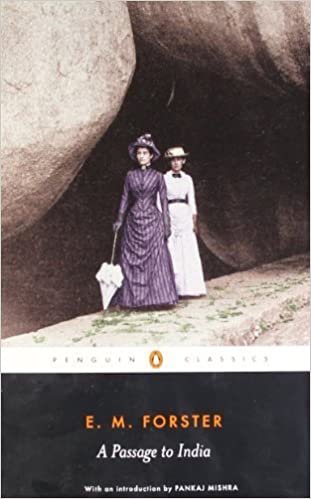Penguins on Parade: A Passage to India
/Some Penguin Classics seem inevitable from the moment their DNA is braided. There are certain titles, certain translations, certain editions that just announce themselves as worthy of the little canonization that comes with wearing the Penguin colophon. Every time I encounter a book like that in its initial printing somewhere else, every time I close that book absolutely certain that I’ve just read one of the best versions ever produced of the work in question, I always reflexively hope to see it someday as a Penguin Classic.
That’s happened just recently with E. M. Forster’s 1924 novel A Passage to India, whose great 1978 Abinger Edition by Oliver Stallybrass is now a Penguin Classic.
This Penguin has an oddly typo-laden new Introduction by Pankaj Mishra, who gets the reader's hopes up with good lines like “Forster judges no one in his fictional universe as unworthy of redemption” but then dashes those hopes with lazy, phoned-in nonsense like: “In rejecting the tyranny of the body-politic and searching for an individual ethic beyond the modern religions of science, history, and art, he now seems a precursor, in his slightly donnish way, of such radical intellectuals and visionaries as Michel Foucault and Georges Bataille.” (Even putting aside the absurdity of Forster being a precursor of any kind to Foucault, there’s also: neither science nor history nor art are religions, and so on.) Fortunately, Introductions are easily skipped.
And that leaves not only Forster’s novel itself – the last one he wrote, and his slackening of faith in the whole apparatus of fiction is apparent on virtually every page – and the lovingly lavish supporting notes by Stallybrass. The Penguin editors include plenty of other stuff, including brief occasional addresses Forster gave on the subject of India. But the Stallybrass notes at the end are the main delight of this edition. They accompany the notes Forster himself made for the Everyman edition and elaborate gloriously on everything that moves and creeps and twitches in these pages.
Take, for instance, the first mention of the fictional town of Chandrapore. Forster wrote only “Chandrapore was suggested geographically by Bankipore, but its inhabitants are imaginary.” Stallybrass adds quite a bit to this little dance of evasion:
Forster spent some three weeks at Bankipore in January 1913; and it was doubtless to impede its recognition and any consequent suspicion that Chandrapore’s inhabitants are not all imaginary, that he makes no mention in the novel of Bankipore’s most remarkable, indeed unique, feature: the Gola, that building designed as a granary that resembles an enormous beehive. The view of Chandrapore as ‘a city of gardens’ is indeed still very much the impression of Bankipore one gets from the Gola’s roof – rather than from the area of the old Civil Lines, which were not on high ground south of the railway, but on low ground between the railway and the river. The Club, indeed, which in the novel looks south to the Marabar Hills, actually looks north on to the Ganges. Other changes doubtless reflect the passage of time: today there are some very spacious streets such as Forster never mentions, but fewer mango trees than he implies. Toddy palms, neems and peepuls still abound, however an oval maidan is a prominent landmark, and the large hospital complex does include as its nucleus and oldest portion a building that is ‘long and sallow’, with arcades that were only recently glassed in.
His notes go on like this endlessly, drawing on every single word Forster ever wrote and every single word that’s ever been written about him (including P. N. Furbank’s magisterial biography, still and always the last word on this author). Readers coming to A Passage to India for the first time won’t need any of these hard-working notes, of course – despite Forster’s increasingly obvious dithering, this is still an incredibly powerful novel. But readers already familiar with the travails of poor Doctor Aziz will find very nearly a second novel (nonfiction this time) packed in at the back, rounding out the edition of A Passage to India to read.




